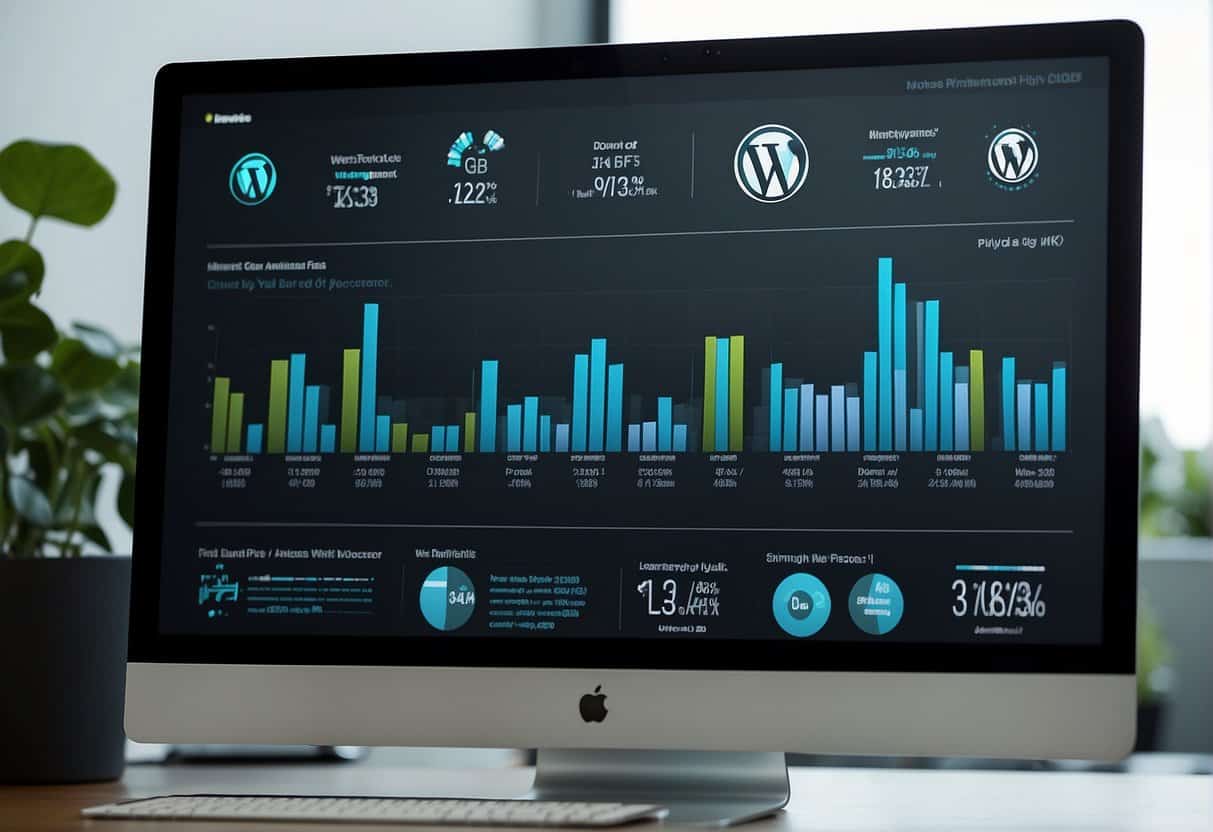
You’ve started your dream agency. Things are progressing nicely. Your projects are nearing completion, and you can feel the growing momentum. Now is the time to start exploring other options to keep your sales pipeline full.
It’s time to look at lead generation.
We recently had a great discussion with our partners during our weekly Virtual Happiness Hour, about lead generation. We talked (and sometimes debated) about what leads are, why we should be measuring them, and how we can increase their effectiveness with a clear lead generation strategy rather than relying on a “hope” strategy. If you haven’t already, you should check out that talk here.
Let’s slow down for a moment. Before we talk about what lead generation is, we need to talk about what lead generation isn’t. Lead generation is not selling. It’s getting the contacts that you will eventually sell to. You need to get the leads, and then you can start selling or proving your worth.
We’re clarifying this at the start because many will apply sales strategies to lead generations. There is some overlap, but they’re not the same. And sometimes, if you push too hard for a sale too early, you’ll drive the customer away. Let’s talk a bit about why.
Not all Leads are the Same
Wouldn’t it be great if every lead we talked to converted after the first call? Unfortunately, most leads don’t come to us ready to buy. It sure would be great if they did, though.
Usually, you have to nurture leads.
You also can’t apply one lead magnet and hope it draws in every type of customer. This is because different customers will be at various stages of realization about how much they need a service to solve their problem. This is referred to as a pain point or a specific problem that prospective customers of your business are experiencing. How much pain a customer is experiencing will differ dramatically. Some are just starting to notice they might require outside service, some see a more precise indication but might not be ready to move, and others will have a desperate need for outside help.
The approach to reach each of these customer types cannot be the same. A successful lead generation strategy crafts different content and guidelines for people at every stage of the journey.
So, what do you do?
You build a process and system to establish where customers are in this journey, figure out who your segments are, what they need, and how much pain they’re feeling.

Use Your Best Customers to Develop a Funnel
Systems can be intimidating for some. The idea of a sales funnel feels impersonal or unnatural for many.
But don’t fear the funnel. The funnel simply helps you qualify the people coming in and determine who is the best customer to work with. Maybe you have three candidates for a sale, but which one will be the best customer for you at this time? When we standardize a process, we can more accurately measure the results and make future decisions.
So, where should you start?
One of the first things to do in developing the right lead strategy for your business is to reach out to your best or earliest customers and find out what brought them to you. This will give you a first look at what you did right, your core customer’s needs, and why they chose you – establishing a baseline for understanding your customers.
Next, standardize those questions. After you’ve chatted with your existing customers, sit down and establish a survey process for future clients. Make it a habit to ask the customer what brought them to you right after closing a deal. A quick survey or chat is all you need. Something that lets you understand how they got to you. What made them decide to join you?
Track and Study
Now that you’ve established a system, it’s time to track and study what you find.
Some never track how their customers reach them, relying solely on their gut. They don’t know if a customer came to them through a referral, organic search, or advertisement. To really understand your customer, you must dig into and study the data. Studying your client data gives you all kinds of insights into client behavior that will enable you to make better decisions.
Maybe you think your clever posts on Facebook drive clients, but in reality, it’s one blog post driving 90% of your first contacts. Or perhaps a video you appeared in gave you the authority you needed in the customer’s eyes and was the deciding factor. You could discover you don’t even need to create a ton of new content. Maybe you need to double down in one area.
Finding out what builds trust in the customer’s mind will go a long way to helping you generate future leads.
For example: One eBook we published from GoWP has been responsible for a large percentage of the leads generated each week. And it has been bringing those numbers for over five years!
What would you do with that information? Maybe you would choose to create more blog articles that lead to and from the eBook. Perhaps you would make a webinar that fleshes out the content from that eBook in more depth. There’s no right or wrong answer here.
The choices will depend on your style and strategy. But if you don’t have a system in place to monitor this information, you’ll miss out on this opportunity to develop it more.
Next Steps
Now you have a system based on tracking and studying in place, you can measure what’s working and what’s not. This helps you understand how leads have been coming to you from the beginning. But what if you discover the need to try something new?
Finding the right next-step strategy for lead generation can be confusing. For every article saying to do this, there’s another article saying to do that. Many get overwhelmed at this stage and default back to waiting on referrals because it’s easier.
Don’t Put All Your Eggs in the Referral Basket
We all love referrals. Who wouldn’t? You do an excellent job for one customer, then sit and wait for the calls to come in.
Chris Lema defines relying solely on referrals as a Hope Strategy – saying that “If your predominant model of lead generation is referrals, that’s a hope strategy. Not lead generation. It’s a great bonus that you got a referral. But when we talk about lead generation, we are talking about strategies that actually generate leads.“
People quickly realize that referrals aren’t consistent enough to rely on for their growth needs. So what should they do? The answers aren’t easy and will depend a lot on your agency size, how much you want to grow, and the types of clients you’re trying to reach.
How To Define The Best Lead Generation Strategy For You
1. Distinguish Yourself
Don’t just be another person in the crowd. When potential customers are searching for who to hire these days, there are many offerings available to them online. How do you stand out from all the other “quality website builders” out there?
Establishing yourself as an authority in your niche area will not only help you organically build a wider audience but also help you stand out in your future client’s mind.
2. Content Will Always Be A Driver
Create content for your niche audience, it doesn’t matter the type. It could be:
- Blogging
- Guest workshops
- Podcasting
- eBooks
The important thing here is, to be honest with yourself, your talents, and your time. You don’t have to do everything. In fact, the worst thing you can do is spread yourself too thin. The goal here isn’t checking off an exhaustive list that hits every area. The goal is to give quality content to your community.
3. Choose The Channel That Works For YOU
Are you a natural writer, with words that flow from your head to the keyboard? Then get blogging! Do you have a silky voice and love talking to people? Start that podcast. Play to your strengths. It might feel like everyone is starting a podcast, but if that’s not your strength, it won’t be sustainable, and your audience will feel it.
Whatever you decide, take some time every week to add value to your community. You’ll be surprised at what follows.
Prioritize Your Lead Generation Efforts
Smaller agencies in particular need to prioritize their lead generation efforts. Budgets are fixed, and there is only so much time in the day.
Do you have more time or money? If you have more money, then focus on buying more ads. If you have more time, how can you use that time to replace the web traffic you won’t get from ads?
Whether you choose ads or content, be sure to drill down deeper to maximize the effectiveness. Often, people make the mistake of not defining a specific target audience for each approach. So they don’t know the desired outcomes to pinpoint. Clifford Almeida called this a “shotgun approach …where you are just hoping something hits.”
Whatever You Decide, Don’t Give Up Too Soon
Leads take time. And most of us want immediate results.
In our industry, it’s only natural to want to move on to the next big thing quickly. New products, services, strategies, and techniques are released daily. And failure to keep up can mean missing out.
This fear of missing out carries over into our lead generation strategies. New is exciting, and we’ll often believe this new approach is the fix. It’ll work better.
But before we ditch everything and switch to the slick new strategy we just read a blog post about, we need to ensure that we’ve spent enough time on a system to see the results. Some leads take time, and if you’ve moved on too quickly, you won’t get to reap the results.
Make sure and run strategies for long enough to see what’s working or not. And before you move on, instead of ditching the method altogether, be sure and try to optimize things first. If something’s not converting like you want it to, it might not be the wrong approach. Maybe it’s the wording or the graphics. Test it out before giving up and moving on.
Not a One Fits All Solution
There is no one-size-fits-all solution here. Each agency has its own goals, budgets, staffing, and other considerations to consider. But regardless of your agency size, some overarching strategies emerged in our talks:
- Take the time to develop a funnel that follows how people are getting to you.
- Dig in and study the results to find gaps and opportunities.
- Find a way to be a contributing member and expert in your niche community.
- Don’t be quick to abandon things you’ve started. Measure. Adapt. Overcome.






